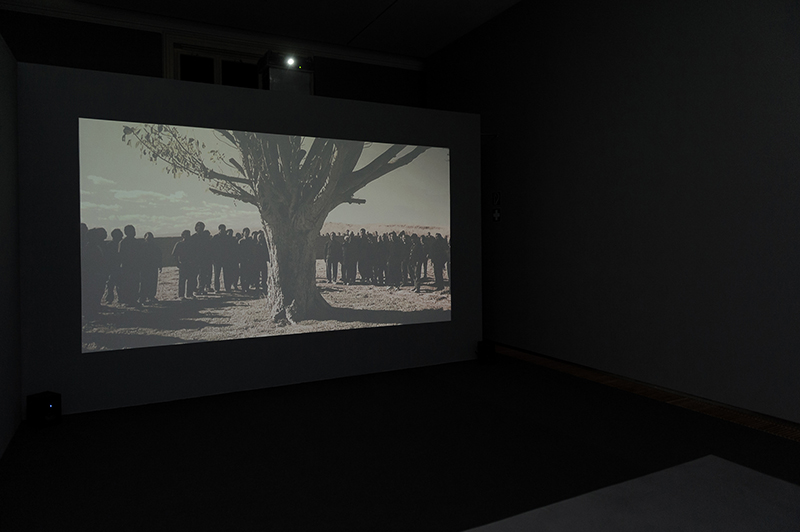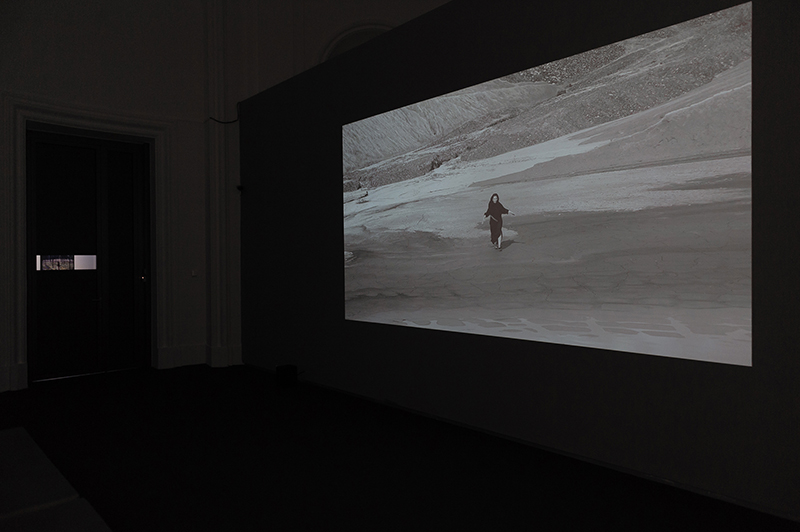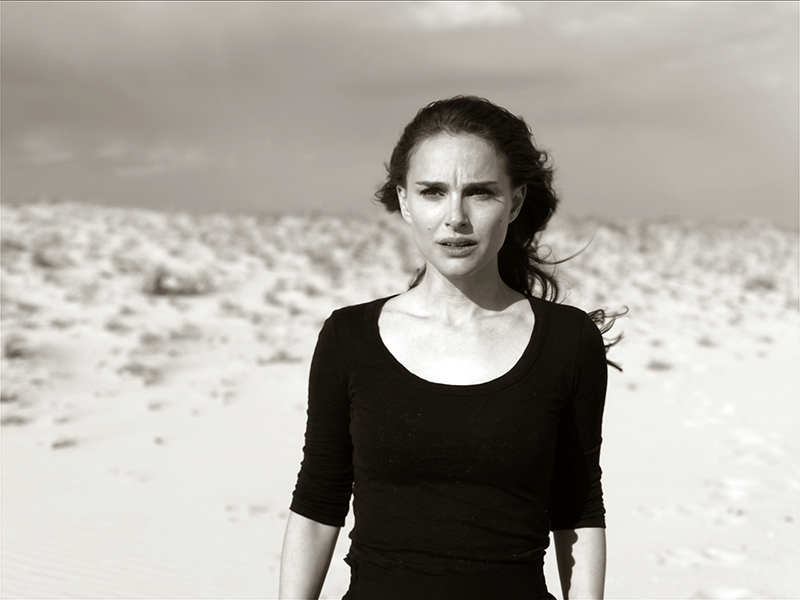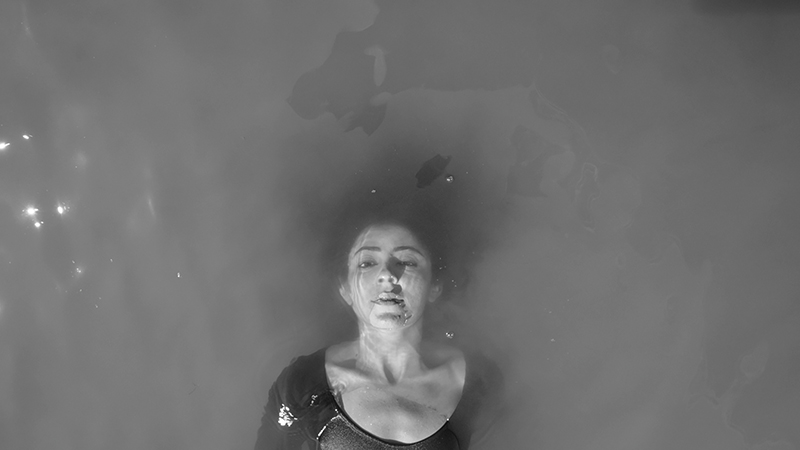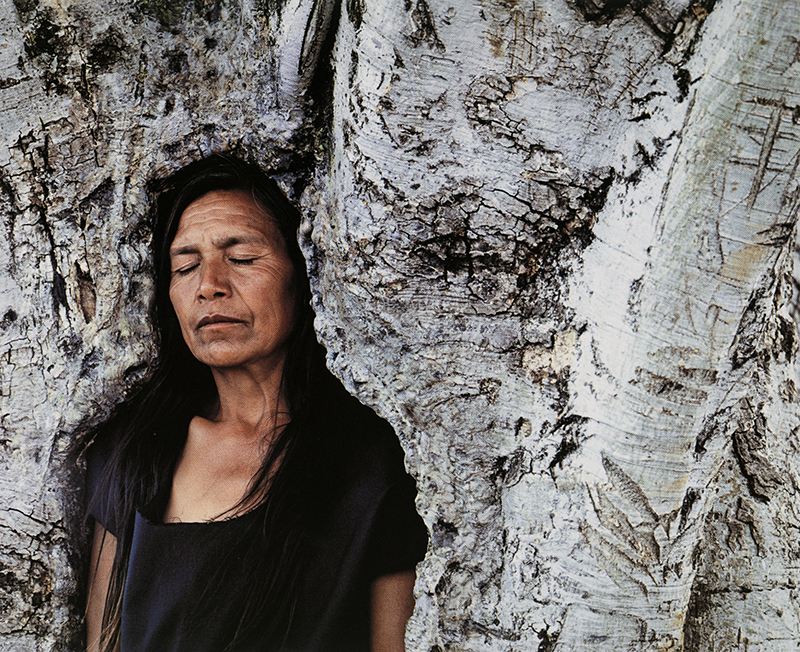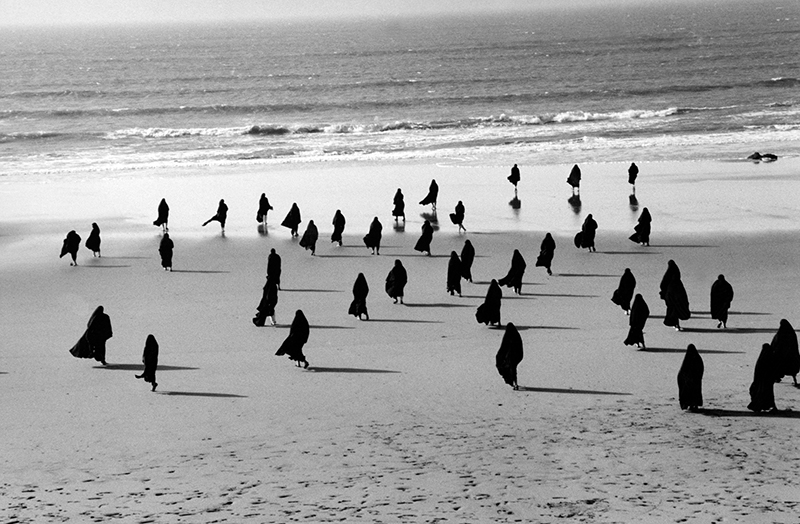ART CITIES:Gratz-Shirin Neshat
Raised in Iran and now living in the U.S.A, Shirin Neshat occupies a central role in the discourse on relations between the East and the West, her photographs and videos revolve around the situation of women in societies shaped by Islam, and the contradictions arising between Western and Oriental cultural traditions.
By Dimitris Lempesis
Photo: Neue Galerie Graz Archive
The exhibition “Women in Society” in the Neue Galerie Graz brings together important works from all Shirin Neshat’s creative periods, from the famous iconic photographs overlaid with texts from the ‘90s, via the multi-channel video installations, to the monumental bodies of works such as “The Book of Kings”. The exhibition’s title addresses two themes constantly recurring in her œuvre: the role of the woman in Iran, and the traumatic impact of diasporic experiences which can shape a woman for the rest of her life and in whose society she finds herself from then on. Shirin Neshat initially came to the United States in 1975 to complete her education, the Iranian Revolution (1978-79), followed by the Iran–Iraq War (1980-88), compelled her to remain abroad. Only in 1990, eleven years after the founding of the Islamic Republic, did she visit Iran again. The changes she observed were profound. “I found myself both fascinated and terrified by the impact of the revolution. There was so much that I didn’t understand that I desperately wanted to under-stand”. Making the “Women of Allah” was the artist’s way of grappling with the new circumstances in the theocratic Iran, especially as they affected women. Far from presenting a monolithic, abiding portrait of Muslim womanhood, “Women of Allah” reflect the shifting and contradictory ideologies that have been projected on the figure of the Iranian woman, both by their government and by the West. The video installations: “Turbulent” (1998), “Rapture” (1999) and “Fervor” (2000), forms a trilogy that uses double projections to investigate the dynamics between men and women in Islamic societies. By employing a minimalist visual imagery and two projection screens, contrasting spheres are composed that engage in a dialogue with each other. In “Turbulent” music serves as a metaphor in order to focus on the gender relations. One projection shows a man on a stage singing a traditional Persian love song from the 13th century with his back to an identically clad audience. The performance is greeted with frantic applause. Coinciding with the enthusiastic applause, the voice of a female singer on the other screen can be heard. She is circled by the camera and improvises a song to an empty concert hall. The woman singing her very personal song in penetrating tones to an empty auditorium stands for the ban on women singers in Iran to perform in public. In “Rapture” groups of uniformly appearing men and women arranged opposite each other move through an old fortress and a barren landscape in ornamental choreographies as if they could see each other beyond the boundaries of the screens. The net effect is a dialogue-like situation: on one screen men clad in white shirts and black pants occupy a fortress, singing ritual songs and carrying out religious or profane ceremonies within its walls, the women in the black chador or niqab on the other screen also seem to be conducting ritual ceremonies. “Fervor” follows the encounter between a man and a woman. The couple meets in an open landscape before meeting again in a courtyard. In the courtyard a preacher gives a sermon about the sin of sexual desire. As they are listening, each protagonist sits in the company of his or her sex, almost disappearing in the sea of men clad in white shirts and black pants and women shrouded in the chador. The couple’s glances seem at first to tentatively meet through the otherwise opaque curtain, but in the course of the tirade they become more and more hesitant. “Tooba” (2002) shows a woman leaning on a fur-rowed tree trunk, while on the other a group clad in black can be seen, moving across a barren landscape towards the tree that is surrounded by a stonewall. As soon as the men and women make it past the wall and enter the garden, the woman merges with the tree and disappears. The double projection works with opposites: the tree versus the flat landscape, the square surrounded by stone and the indistinct grounds, the individual and the crowd, the calm of the woman and the agitation of the group. The ”Book of Kings” is an allegorical representation of the social structure of a country, not a documentary portrait of Iran. The sitters are of both Persian and Arab descent, nonprofessionals whom Neshat directed in a series of photo shoots conducted in New York. The images are organised into three groupings, which the artist informally refers to as “patriots”, “villains” and “masses”, in her words, “Those who fight power, those who hold power and those who are simply innocent bystanders”. “Roja” is based on a dream the artist had. In the dream Shirin Neshat leaves a modern Western building and thinks she recognises her mother in the distance, who at closer range is transformed into a monster. Neshat transfers the atmosphere of the nightmare to her film narrative: a young woman is sitting in a sold-out theater hall following with interest the appearance of an older performer. When she has the feeling that the performance is directed at herself, she rushes out of the hall, finding herself alone in an industrial no-mans-land. In “Sarah” (2016), a young woman wandering around in the forest. The forest shows signs of an intervention, but it is unclear whether these are signs of decay or the evidence of violent conflicts. The shorn pieces of hair which the woman discovers and the remains of an abandoned fireplace could be taken as signs of devastation. Associations with violence, mortality and death also occur as the woman meets a troop of soldiers marching by and a group of women clad in black and swinging an incense vessel.
Info: Curator: Holger Kube Ventura, Neue Galerie Graz, Joanneumquarter, access Kalchberggasse, Graz, Duration: 18/1-22/4/18, Days & Hours: Tue-Sun 10:00-17:00, www.museum-joanneum.at

